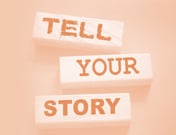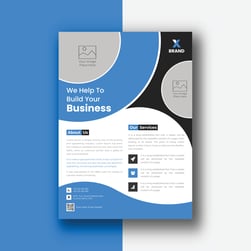Has anyone ever enjoyed a session of Death by PowerPoint? If your sales reps are still focusing on speeds, feeds, and other dry factoids during client presentations, chances are high they’re not delivering a message that resonates.
speeds, feeds, and other dry factoids during client presentations, chances are high they’re not delivering a message that resonates.
While facts still matter and need to be communicated, a more compelling approach is to weave them into stories that hold your clients’ attention and truly engage them.
Why Stories?
Stories sell better than facts, it’s that simple. When we listen to stories, we use more complex areas of our brain; we engage our emotions; we find it easier to remember content and data, and we stay focused. We’re all people and we all like a good story.
Stories make facts come to life and render the storyteller more memorable. They create a stronger connection between the solutions your clients need and your company. If you can foster those feelings, closing the deal should be much easier.
What Makes a Good Story?
All good stories have several elements. They have a central character, an obstacle or problem to overcome, a resolution, and a central message.
 Good stories should be easy to follow and have a clean structure—beginning, middle, and end. They should be told simply without getting bogged down in data. They should be geared to the audience or the client in front of you and based on substance. Don’t tell stories simply to embellish, but to illustrate a point.
Good stories should be easy to follow and have a clean structure—beginning, middle, and end. They should be told simply without getting bogged down in data. They should be geared to the audience or the client in front of you and based on substance. Don’t tell stories simply to embellish, but to illustrate a point.
Good stories are also not typically about you. They are about your clients’ successes.
Above all, stories should show, not tell. This is true of all storytelling, from magazine articles to movies. It’s the difference between telling your prospect you provide good service and letting them realize it on their own. Which do you think is more effective?
How to Tell Good Stories
This approach may sound difficult, and it takes some practice to master. But when you think about it, most of us instinctively try to tell stories when we speak to other people. When you’re telling your friends about your cancelled flight, you try to weave all the facts into a story. You don’t focus on the time or the flight number, or even the carrier, but on details that engage the senses. You describe the thick crowds, the stifling heat in the terminal, people who lost their patience, screaming kids, your frustrations, your tired back, and your relief when you got rebooked.
Story Examples
Use your natural instincts to weave stories into your sales presentations. Here are some examples to get you thinking.
Say a prospective client asks you about rush jobs. You might tell them about a time when a client called you in a panic because they needed something done super-fast to meet a critical deadline. Briefly describe the cause of the problem—computer glitches, internal disagreements, failure by another supplier. Lay out the consequences of missing the deadline.

Describe what your staff pulled together to make the deadline—working overnight, calling in extra operators, sourcing stock quickly, consuming huge jugs of coffee. Then describe your client’s relief and appreciation when you called to tell them you did the job in time. If the client sent a thank you note, throw that into the story. You have your hero, the conflict, the resolution, and the key message that you go above and beyond at all times to get the job done.
When a prospective client asks what you can do for them, have some stories ready about other clients. Use case studies to illustrate how you solved problems and created opportunities for each client. Quantify the benefits your clients experienced, whether it’s 25% time savings or 30% revenue increase. Using client stories to show your capabilities carries more credibility.
When a client says tell me about your company, don’t describe your shop floor and the equipment you have. Rather, tell them a story about the small space where you got your start. Describe how you creatively overcame obstacles, what kept you focused, how you developed strategies to clinch key clients. Describe your vision for your company and what you’re proud of. Tell a human story about how you built your business. Roger Gimbel was able to do this recently in a published book called "I'm Not Anyone." Roger donates the book sale proceeds to the scholarship administered by the Print and Graphics Scholarship Foundation. Buy “I’m Not Anyone” now at Amazon in either paperback or eBook form.
Obviously, you can’t weave everything into one long narrative, but if you incorporate a few solid stories, you’ll create a memorable encounter and be closer to a positive outcome.
